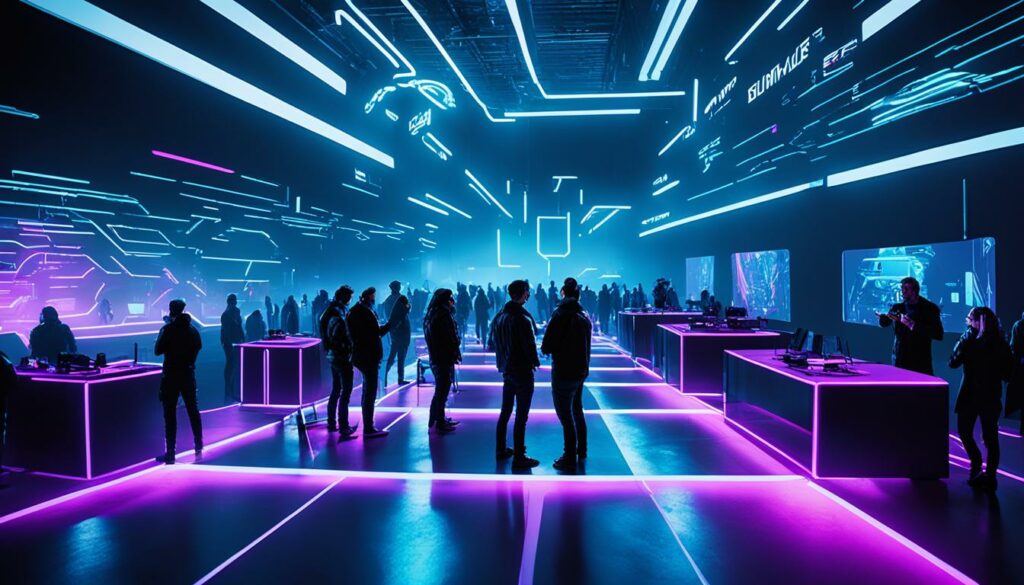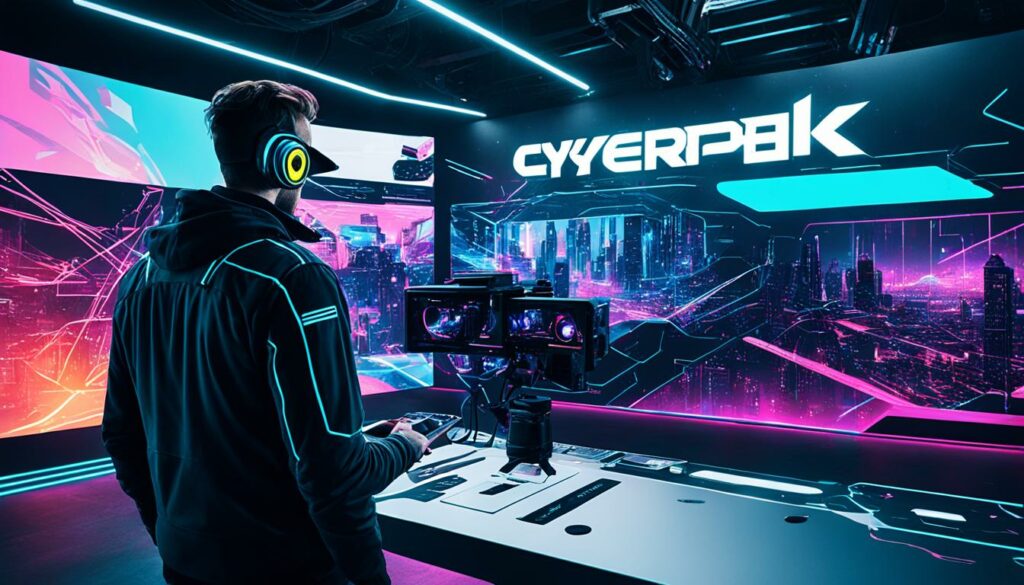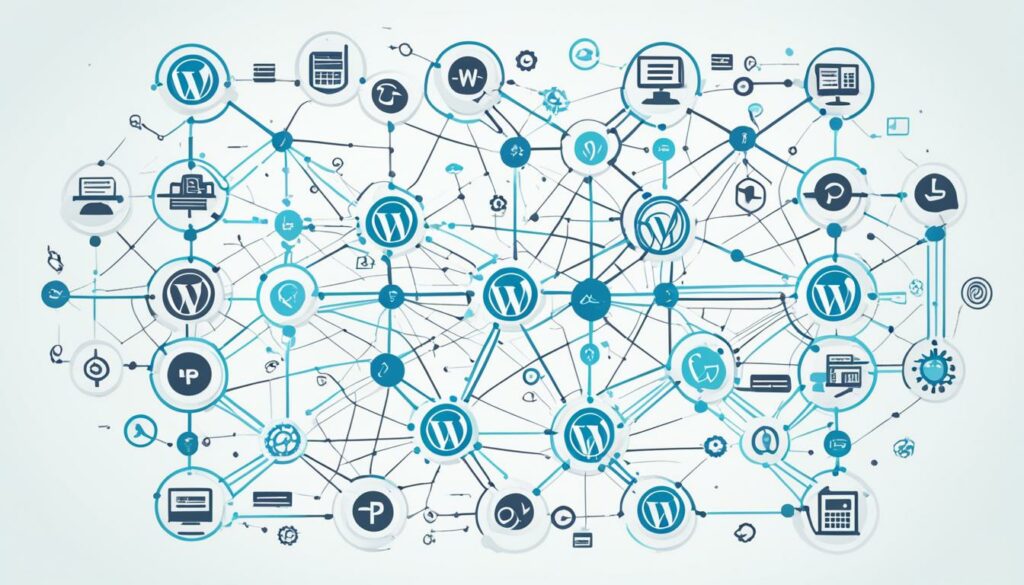Augmented and virtual reality (AR/VR) technologies are revolutionizing industries and transforming the way we interact with digital content. From immersive gaming experiences to innovative training methods, the potential of AR/VR is vast. As businesses and individuals explore the possibilities of AR/VR applications, it’s crucial to consider the importance of reliable and optimized hosting.
When it comes to hosting AR/VR applications, there are specific factors to keep in mind. Ensuring optimal performance, security, and affordability are key considerations for businesses looking to provide exceptional experiences for their users. By choosing the right hosting providers and implementing best practices, you can maximize the potential of your AR/VR applications.
In this article, we will explore the key insights and best practices for hosting AR/VR applications. We will provide recommendations for selecting the best hosting providers, optimizing performance, ensuring security, and managing costs. Additionally, we will discuss the importance of high-quality content for AR/VR experiences and explore various use cases for AR/VR in different industries. Lastly, we will share best practices for hosting AR/VR events and provide key takeaways to help you navigate the world of AR/VR hosting successfully.
Key Takeaways:
- Choose a reliable hosting provider to ensure optimal performance for your AR/VR applications.
- Optimize your hosting environment to minimize latency and provide seamless experiences.
- Implement robust security measures to protect sensitive data and user privacy.
- Consider the affordability of hosting solutions while maintaining high quality.
- Create high-quality content specifically designed for AR/VR to enhance user experiences.
Importance of High-Quality Content for AR/VR Experiences
Creating high-quality content is paramount to delivering exceptional augmented reality and virtual reality experiences. The success of AR/VR applications heavily relies on captivating and immersive content that is specifically tailored to these technologies. Whether it’s the entertainment and gaming industry, retail, real estate, military, or healthcare, each sector can leverage the power of high-quality content to maximize the potential of AR/VR.
In the entertainment and gaming industry, top-notch content is already driving the success of AR/VR applications. These industries understand the importance of creating realistic and captivating experiences that keep users engaged and coming back for more. By investing in content development for virtual reality, they have been able to provide users with immersive gaming experiences and interactive entertainment like never before.
“Creating high-quality and immersive content specifically designed for AR/VR is essential to ensure an engaging and realistic user experience.”
However, it’s not just limited to entertainment and gaming. Other industries have recognized the potential of AR/VR and have developed specialized content to cater to specific use cases. Retailers can create virtual showrooms that allow customers to explore products in a visually appealing and interactive way. Real estate companies can provide virtual property tours, allowing potential buyers to experience properties from anywhere in the world. Militaries can simulate training scenarios in a safe and controlled environment, enhancing soldier training and readiness. Healthcare professionals can utilize AR/VR to visualize complex medical procedures or improve patient rehabilitation programs.
By prioritizing high-quality content development for augmented reality and virtual reality, businesses across various sectors can deliver immersive experiences that leave a lasting impact on users. Through realistic simulations, engaging visual storytelling, and interactive elements, AR/VR experiences can bring products, services, and training to life like never before.
Use Cases for AR/VR in Various Industries
AR/VR technology offers immense potential for various industries, revolutionizing the way we work, communicate, and experience the world around us. The applications of AR/VR span across multiple sectors, transforming and enhancing various processes and experiences. Let’s explore some key use cases:
AR/VR Applications in Human-Machine Interfaces
AR/VR technologies have found valuable applications in human-machine interfaces, where they improve collaboration and productivity by enhancing how humans and machines work together. These interfaces leverage AR/VR capabilities to provide real-time data visualization, step-by-step instructions, and interactive guidance. By seamlessly integrating human and machine interactions, AR/VR technologies enable enhanced design speeds, safety, and compliance efforts.
AR/VR for Improved Communications
In the digital workplace, AR/VR can significantly improve communications by providing genuine presence and immersive experiences for remote workers. Through virtual meetings, employees can engage in realistic interactions and collaborative sessions, regardless of their physical locations. This technology allows teams to share ideas, visualize concepts, and work together as if they were in the same room. The enhanced communication facilitated by AR/VR strengthens connections and boosts productivity.
AR/VR for Safety Training
Safety training is another area where AR/VR technologies have proven their value. By creating realistic and immersive environments, these technologies enable trainees to experience hazardous situations in a controlled setting. AR/VR safety training scenarios allow individuals to practice critical procedures, simulate emergency situations, and develop crucial skills without exposing themselves to actual risks. This approach enhances the effectiveness of safety training programs and reduces costs associated with real-world training.
AR/VR in 3D Design
3D design is significantly enhanced by the integration of AR/VR technologies. Designers can leverage these tools to visualize and manipulate virtual objects in three-dimensional spaces, providing a more intuitive and immersive design experience. AR/VR in 3D design enables designers to assess scale and proportion, make real-time adjustments, and explore various design iterations before committing to physical prototypes. This streamlines the design process, improves accuracy, and accelerates time-to-market.
AR/VR for Enhanced Manufacturing
In the field of manufacturing, AR/VR applications offer numerous benefits, including improved efficiency and accuracy. By overlaying digital information onto physical environments, AR/VR technologies aid workers in assembling complex products, reducing errors, and minimizing rework. Additionally, AR/VR can deliver on-the-job training, providing real-time guidance to operators and promoting knowledge transfer. These technologies optimize manufacturing processes, resulting in increased productivity, reduced downtime, and enhanced quality control.
AR/VR for Virtual Travel
Virtual travel experiences powered by AR/VR technologies transport users to remote, exotic, or historically significant locations without leaving their homes. Through immersive simulations, individuals can explore virtual worlds, historical sites, and cultural landmarks, enabling a sense of presence and connection. Virtual travel broadens horizons, offers educational opportunities, and satisfies wanderlust, serving as an alternate way to experience new destinations and cultures.
By leveraging the power of AR/VR technologies in these industries, businesses unlock new possibilities, improve productivity, and enhance user satisfaction. The adoption of AR/VR is transforming the way we interact with technology, creating immersive experiences that shape the future of various sectors.
Best Practices for Hosting AR/VR Events and Meetups
Hosting AR/VR events and meetups can be an exciting opportunity to bring together enthusiasts, industry experts, and curious minds who are passionate about augmented and virtual reality. To ensure a successful and memorable experience, it’s crucial to follow best practices for planning, execution, and engagement. Here are some key tips to help you create an immersive and impactful AR/VR event:
1. Choose the Right Platform
When hosting AR/VR events, selecting the right platform is paramount. Consider factors such as your target audience, event budget, and platform compatibility. There are various options available, including dedicated AR/VR event hosting platforms, video conferencing tools with AR/VR integration, and social VR platforms. Assessing your specific requirements will help you make an informed decision.
2. Plan Engaging Event Content
The content and format of your AR/VR event play a vital role in captivating attendees. Craft an agenda that covers diverse topics, showcases innovative applications, and encourages interactive sessions. Incorporate themes that resonate with your target audience and align with the purpose of the event. Determine the event duration based on the number and complexity of the sessions you plan to include.
Remember, the content is the heart of your event. Engaging, informative, and inspiring content will keep attendees captivated throughout the event.
3. Test and Troubleshoot
Prior to the event, thoroughly test and troubleshoot the platform, content, and equipment. Conducting extensive testing ensures that everything runs smoothly and minimizes the chances of technical glitches during the event. Test the audio and visual quality, interactive elements, and any features specific to the platform you’ve chosen. Additionally, have a backup plan in case of any unforeseen issues.
4. Foster Audience Engagement
An interactive and engaging event is key to leaving a lasting impression on your attendees. Encourage audience participation through polls, Q&A sessions, and live chats. Provide opportunities for networking and collaboration, such as breakout rooms or virtual meet-and-greets. Incorporate interactive elements, such as live demos or hands-on experiences, to enhance the immersion and excitement of the event.
5. Follow Up and Collect Feedback
After the event, it’s crucial to follow up with attendees and collect feedback to improve future events. Send out a post-event survey or feedback form to gain insights into what worked well and areas for improvement. Analyze the feedback received and make adjustments accordingly. Engaging with attendees post-event also helps build a sense of community and fosters ongoing connections.
By implementing these best practices for hosting AR/VR events and meetups, you can create a memorable and impactful experience for participants. Whether it’s a conference, meetup, or virtual exhibition, thoughtful planning, engaging content, and seamless execution will ensure the success of your AR/VR event.
Remember, hosting AR/VR events requires careful attention to detail and continuous improvement based on participant feedback. Stay updated with the latest trends and technologies in the AR/VR industry to provide an immersive and cutting-edge experience for your attendees.

Key Takeaways:
- Choose the right platform that suits your audience, budget, and compatibility.
- Plan engaging event content and themes that resonate with your attendees.
- Thoroughly test and troubleshoot all aspects before the event to avoid technical glitches.
- Foster audience engagement through interactive elements and networking opportunities.
- Follow up with attendees and collect feedback to continuously improve your future events.
Conclusion
In conclusion, hosting for augmented and virtual reality (AR/VR) applications requires careful planning and consideration to ensure optimal performance and user satisfaction. By following best practices and prioritizing the specific requirements and challenges of AR/VR applications, businesses can maximize the potential of these technologies and provide exceptional experiences for their users.
One of the key takeaways for hosting AR/VR applications is the importance of creating high-quality content. By focusing on creating immersive and realistic content specifically designed for AR/VR, businesses can enhance user engagement and deliver exceptional experiences. Whether it’s in industries like entertainment, gaming, retail, real estate, military, or healthcare, high-quality content is crucial for the success of AR/VR applications.
Additionally, selecting the right hosting providers and platforms is essential for seamless and reliable AR/VR hosting. By considering factors such as audience, budget, compatibility, and security, businesses can ensure optimal performance and user satisfaction. Testing and troubleshooting the platform, content, and equipment prior to hosting events or meetups is also vital to identify and address any technical issues in advance.
Lastly, engaging and moderating participants during AR/VR events and collecting feedback for continuous improvement are important practices. With the continuous evolution of AR/VR technologies, incorporating these technologies into various industries will undoubtedly reshape the way we work, communicate, train, and experience the world around us. By following the key insights and best practices discussed in this article, businesses can navigate the challenges and harness the full potential of hosting AR/VR applications.
FAQ
Q: What factors contribute to a successful AR/VR experience?
A: The quality of the content plays a vital role in creating an engaging and realistic AR/VR experience. It is essential to focus on creating high-quality and immersive content specifically designed for AR/VR applications.
Q: In which industries are AR/VR applications already being utilized?
A: AR/VR technology has found applications in industries such as entertainment, gaming, retail, real estate, military, and healthcare. These industries have developed specialized training content and use cases for AR/VR.
Q: How can businesses leverage AR/VR to improve productivity and user satisfaction?
A: AR/VR can be used in various industries to enhance human-machine interfaces, revolutionize communications in the digital workplace, provide immersive safety training, improve 3D design, enhance manufacturing processes, and offer virtual travel experiences.
Q: What are the best practices for hosting AR/VR events and meetups?
A: To host successful AR/VR events and meetups, it is crucial to choose the right platform, plan the event content and format, test and troubleshoot the platform and equipment, engage and moderate participants, and collect feedback for continuous improvement.
Q: What are the key considerations for hosting AR/VR applications?
A: When hosting AR/VR applications, businesses should prioritize high-quality content creation, select reliable and secure hosting providers, optimize performance, and manage costs effectively.












